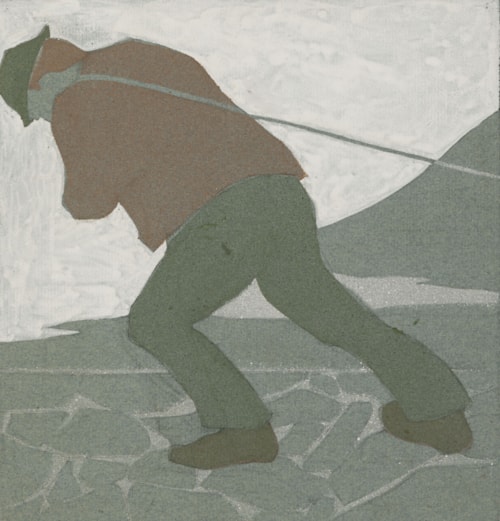
Leopold BLAUENSTEINER
Vienna 1880 - Vienna 1947
Biography
The Austrian artist Leopold Blauensteiner was orphaned at the age of seven, and after leaving school in Melk spent a year in the army. He then enrolled in the Academy of Fine Arts in Vienna, where he studied with the historical painter Christian Griepenkerl. He also took private lessons with the graphic designer and draughtsman Alfred Roller, who was a founder member of the Vienna Secession and was closely involved with its associated journal Ver Sacrum. In 1903 and 1904 the magazine published some colour woodcuts by Blauensteiner, which was the first time his work appeared in any public context. Within a few years Blauensteiner had become linked with a group of Secession artists known as the ‘Klimt-Gruppe’, and he was among the artists, led by Gustav Klimt and Josef Hoffmann, who contributed to the Kunstschau Wien of 1908, an arts and crafts exhibition, held to mark the 60th anniversary of the accession of Emperor Franz Joseph I, that became an important manifestation of Viennese modernism. After serving in a light cavalry unit during the First World War, Blauensteiner continued his artistic career, becoming a member of the Vienna Künstlerhaus, of which he later served as president between 1938 and 1941. From 1925 onwards he also worked in the town of Melk, on the Danube west of Vienna, and in 1929 his painting of a funeral in the Abbey at Melk won him a scholarship to study in Italy for a year. Although best known as a landscape and portrait painter, with exhibitions of his work in Berlin, Dresden, Prague, Vienna and elsewhere, Blauensteiner also designed furniture, ornaments and interiors. A member of the Austrian National Socialist party until it was banned in 1933, he joined the Nazi party after the Anschluss of 1938 and was involved with the activities of the Reich Chamber of Fine Arts in Austria. Blauensteiner was, however, instrumental in preventing the planned destruction of works by Austrian artists labelled ‘degenerate’ by the Nazis, such as Oscar Kokoschka and Egon Schiele. Although he was arrested by Russian occupation forces after the war, he was eventually cleared of any wrongdoing before dying of a heart attack a few months later. Paintings and drawings by Blauensteiner are today in the collections of several museums in Austria, as well as the Musée d’Orsay in Paris.


